10/10/21 - First feelings riding the 2022 GAS GAS Trial models -
After a lapse of six years, Phototrial returns to test motorcycles. The distance from this delicate task is due to the increasingly personal interpretation of the performance of motorcycles that have reached very high levels in all fields: from the engine to the suspensions, to the chassis parts. Often the customer is fond of a brand and continues to defend it throughout his life, and it does not matter if the new models no longer coincide with his way of driving.
For this quick test within the international "UNITED IN DIRT" circuit, masterfully organized by GAS GAS Italia in the Maggiora Crossdromo, we made use of a new tester who can boast several successes in the past in the regional and national fields such as the Mono-brand Trophy. Fantic in 1992 and 1993, and who today delights in his spare time to refine his mechanic technique, the Piedmontese Bruno Bonansea.
Although he is no longer young, he has kept a constant update in his way of riding and without forgetting the abc of our sport, he is able to benefit from the advantages of modern riding, made up of “stopping and hopping” as much as frequent use of suspensions and clutch.
HISTORICAL NOTES
Since the first Halley 325cc exhibited at the Barcelona Motor Show in 1985, product of the trio Casas, Pibernat and Paxau, the Spanish brand boasts a past full of successes, as well as difficult financial situations. In Italy, his image had always been associated with the importer, Claudio Favro, owner of FG Distribution, from Valsusa
For two years now, the Spanish brand has become part of the PIERER Mobility group, the main European manufacturer of "powered two-wheeled" (PTW). With its motorcycle brands KTM, HUSQVARNA Motorcycles and GASGAS, it is one of the European market and technology leaders. In addition to vehicles with combustion engines, the product portfolio also includes emission-free two-wheelers with electric drives (e-motorcycles, e-bicycles and e-scooters)
The new management of the sales network provides for a direct involvement of the dealers, making the importer figure disappear. At this meeting was present one of the most
efficient dealers in the North-West, Moreno Moto di Susa.
THE MOTORCYCLES
Two versions, called "TXT Racing" and "TXT GP", each of which with the 4 classic displacements of these times: 125, 250, 280 and 300 cc.
The chassis in chrome-moly steel, finished with a tough red powder coating, is common to both configurations. Plastics are molded using Polypropylene to avoid marks when bent more than 90 degrees. All front mudguards feature an integrated fork brace.
The braking systems are Braktec designed and built for Trials. A 4-piston monobloc caliper with a 185mm NG wavy brake disc at the front, while a 2-piston caliper and a 150mm NG wavy disc at the rear. The latter features patented magnetic pads, which remain open when the wheel is removed.
The engine is a two-stroke with 6-speed gearbox and BRAKTEC 1/3 diaphragm disk clutch in oil bath, hydraulically operated. HIDRIA electronic control unit, equipped with selectable engine maps, between dry and wet.
TECH forks with aluminum support tube Ø 39, and here is the first difference between Racing and GP. For the first, there are three adjustments, while one is added on the GP. REIGER hydraulic shock absorber with linkage.
The filter box is carbon for the GP. Other details to make the GP version more competitive and / or to save weight are a Renthal handlebar with a different bend, the fork plates, the modified rear rim. All versions have a declared weight of just under 70kg.
OUR FEELINGS
The test area was identified within the aforementioned cross-track and consisted of an ups and downs with not too steep slopes on a ground made slippery by the rain, which had fallen a few moments before.
Given therefore that in just over half an hour and on a single type of path, we did not an exhaustive test but just an interesting first approach, here are our feelings.
In choosing the vehicles from the very wide range at our disposal, we opted for the 250 TXT Racing and the 300 TX GP, that means the lower and upper limits of the range, keeping aside the small displacement, for which we don't have many opportunities to comparison.
The “small” 250 already seemed more than enough to tackle steep climbs with ease, even if starting from their base and dosing the throttle of an engine that always responds quickly and with well-tuned suspension for an average user. After all, the power of the engine, combined with the extreme lightness of the front end have always been peculiar characteristics of the Spanish brand.
In fact, by switching to the 300 in the more sophisticated model, the response is even “sharp” and requires a more careful dosage and a slightly further back position to ensure that grip is not lost. In fact, by admission of the same manufacturer, it is a bike made for expert riders who want to go beyond their limits.
The brakes are progressive and very powerful. The ability to move your body - if you ride in the old fashioned way - is facilitated by the very small footprint in the saddle and tank area. On the other hand, if you opt to hop the front or the back, lightness and suspension are of great help.
The engine - with the foresight to give a decisive blow and use the entire stroke of the kick-start lever - starts well both cold (with the choke pulled out) and hot.
Access to the air filter, the main routine maintenance task - is very simple, just remove a couple of screws.
In short, two ready-to-race vehicles perfectly in line with the needs of the young trialists of this modern era of Trial.
---------------------------------------------------------------------------------------
Prime impressioni alla guida dei modelli Trial GAS GAS 2022
Dopo un intervallo di sei anni, Phototrial torna a testare le moto. La lontananza da questo delicato compito è dovuta alla sempre più personale interpretazione delle prestazioni di motociclette che hanno raggiunto livelli altissimi in tutti i campi: dal motore alle sospensioni, alle parti ciclistiche. Spesso il cliente è affezionato ad un marchio e continua a difenderlo per tutta la vita, e poco gli importa se i nuovi modelli non collimano più con il suo modo di guidare.
Per questo veloce test all'interno del circuito internazionale “UNITED IN DIRT”, magistralmente organizzato dalla GAS GAS Italia nel Crossdromo di Maggiora, ci siamo avvalsi di un nuovo tester che può vantare diversi successi in passato in ambito regionale e nazionale come il Trofeo Monomarca Fantic nel 1992 e 1993, e che oggi si diletta nel suo tempo libero a raffinare la tecnica di meccanico, il piemontese Bruno Bonansea.
Pur non essendo più giovane, ha mantenuto un costante aggiornamento nel suo modo di guidare e senza scordare l'abc del nostro sport, è in grado di beneficiare dei vantaggi della guida moderna, fatta di “spostamenti” e frequenti sfruttamenti di sospensioni e frizione.
CENNI STORICI
Dai tempi della prima Halley 325cc esposta al Motor Show di Barcellona nel 1985, prodotto del trio Casas, Pibernat e Paxau, il marchio spagnolo vanta un passato ricco di successi, come anche di difficili situazioni finanziarie. In Italia la sua immagine si era sempre associata all'importatore, il valsusino Claudio Favro, titolare della FG Distribution.
Da due anni a questa parte il marchio spagnolo è entrato a far parte del gruppo PIERER Mobility, principale produttore europeo di "due ruote a motore" (PTW). Con i suoi marchi motociclistici KTM, HUSQVARNA Motorcycles e GASGAS, è uno dei leader tecnologici e di mercato europei. Oltre ai veicoli con motore a combustione, il portafoglio prodotti comprende anche veicoli a due ruote a emissioni zero con propulsione elettrica (moto, bici e scooter elettrici).
La nuova gestione della rete vendita prevede un diretto coinvolgimento dei concessionari, facendo scomparire la figura dell'importatore. A questo incontro era presente uno dei più
efficienti concessionari del nord-ovest, Moreno Moto di Susa.
LE MOTO
Due allestimenti, chiamati “TXT Racing” e “TXT GP” , ognuno dei quali con le 4 cilindrate classiche di questi tempi: 125, 250, 280 e 300 cc.
Comune a entrambi gli allestimenti nella parte ciclistica il telaio in acciaio al cromo-molibdeno, rifiniti con una resistente verniciatura a polvere rossa. Le plastiche vengono stampate utilizzando il polipropilene per evitare i segni di quando vengono piegate oltre i 90 gradi. I parafanghi anteriori presentano un supporto per forcella integrato.
Gli impianti frenanti sono Braktec progettati e costruiti per il Trial. Una pinza monoblocco a 4 pistoncini con disco del freno ondulato NG da 185 mm sull’anteriore, mentre sul posteriore una pinza a 2 pistoncini e un disco ondulato NG da 150 mm. Quest'ultimo presenta pastiglie magnetiche brevettate, che restano aperte quando si rimuove la ruota.
Il motore è a due tempi con cambio a 6 marce e frizione a membrana a disco BRAKTEC 1/3 in bagno d'olio, azionata idraulicamente. Centralina elettronica HIDRIA, dotata di mappature del motore selezionabili, tra asciutto e bagnato.
Forcelle TECH con tubo portante in alluminio Ø 39, e qui c'è la prima differenza tra Racing e GP. Per la prima sono tre le regolazioni, mentre se ne aggiunge una sulla GP. Ammortizzatore idraulico REIGER con leveraggio.
La cassa filtro è in carbonio per la GP. Altri particolari per rendere più competitiva la versione GP e/o per risparmiare sul peso sono un manubrio Renthal con una piega differente, le piastre forcella, il cerchione posteriore lavorato. Tutte le versioni hanno un peso dichiarato di poco inferiore ai 70kg.
LE NOSTRE IMPRESSIONI
La zona di prova è stata individuata all'interno del suindicato crossdromo e consisteva in un saliscendi con pendenze non troppo accentuate su un terreno reso viscido dalla pioggia, caduta fino a pochi istanti prima.
Premesso dunque che in poco più di mezz'ora e su un unico tipo di percorso, il nostro non è stato un test esaustivo ma giusto un primo interessante approccio, eccovi le nostre impressioni.
Nello scegliere i mezzi tra la vastissima gamma a nostra disposizione, abbiamo optato per il 250 TXT Racing e il 300 TX GP, ovvero il limite inferiore e quello superiore del range, tenendo da parte la piccola cilindrata, per la quale non abbiamo molte occasioni di confronto.
La “piccola” 250 ci è sembrata già più che sufficiente per affrontare con disinvoltura ripide salite, pur partendo dalla loro base e dosando il gas di un motore che risponde sempre con rapidità e con sospensioni ben tarate per un utente medio. Del resto la potenza del motore, unita all'estrema leggerezza dell'avantreno sono sempre state caratteristiche peculiari del marchio spagnolo.
Infatti passando alla 300 nel modello più sofisticato, la risposta è ancora più “cattiva” e necessita di un dosaggio più attento e di una posizione leggermente più arretrata per fare in modo che non si perda il grip. Infatti per ammissione della stessa Casa è una moto realizzata per i piloti esperti che vogliono andare oltre i propri limiti.
I freni sono progressivi e molto potenti. La possibilità di muovere il proprio corpo - se si guida all'antica - è facilitata dal modestissimo ingombro zona sella e serbatoio. Se invece si opta per spostare il davanti o il dietro, leggerezza e sospensioni sono di grandissimo aiuto.
Il motore - con l'accortezza di dare un colpo deciso e utilizzare tutta la corsa della leva della messa in moto – parte bene sia a freddo (con l'aria tirata) sia a caldo.
L'accesso al filtro dell'aria , principale incombenza di manutenzione ordinaria – è molto semplice, basta rimuovere un paio di viti.
In breve due mezzi pronto-gara perfettamente in linea con le esigenze dei giovani trialisti di questa era moderna del Trial.
foto di Lucio Buselli e Phototrial
---------------------------------------------------------------------------------------
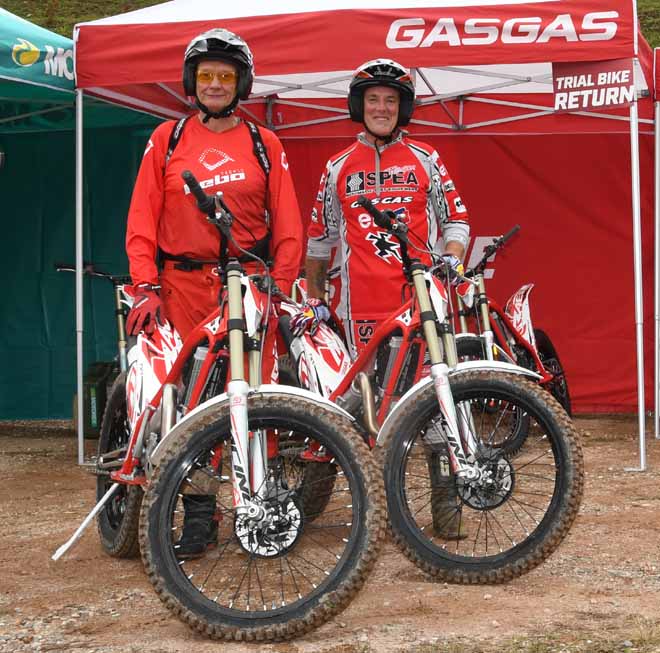
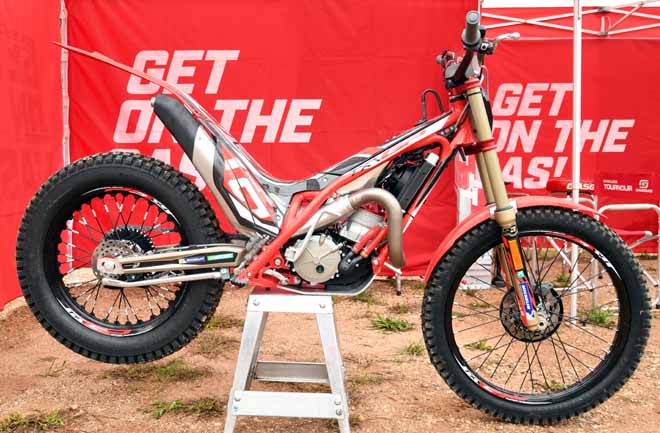
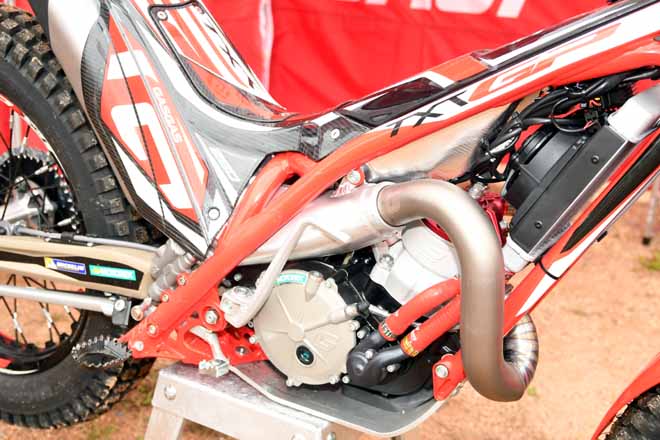
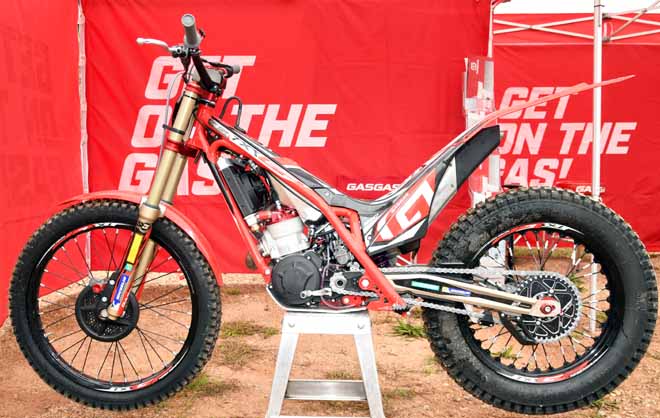
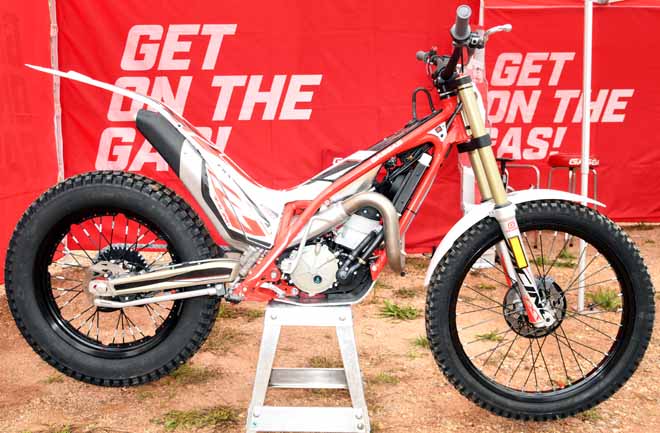
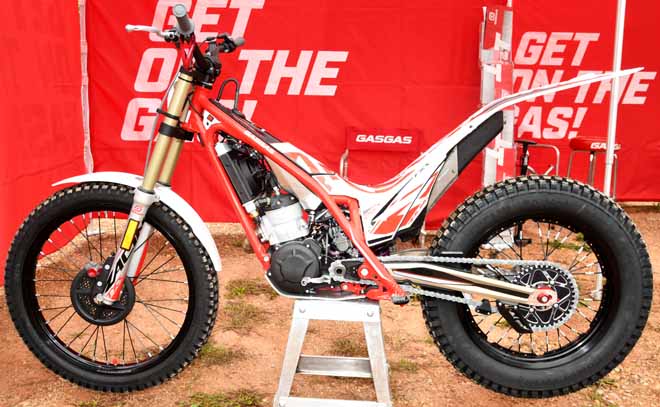
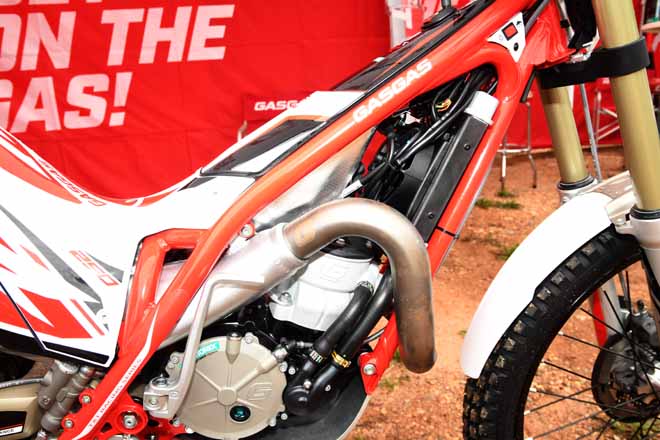
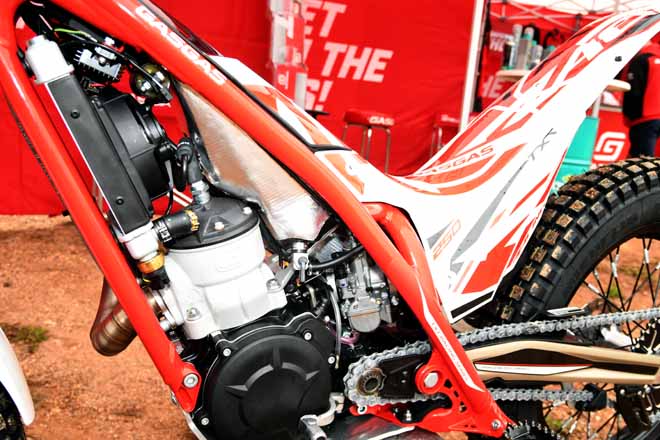
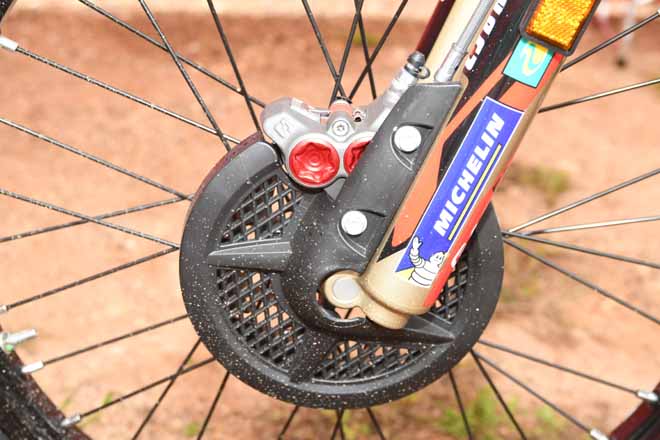
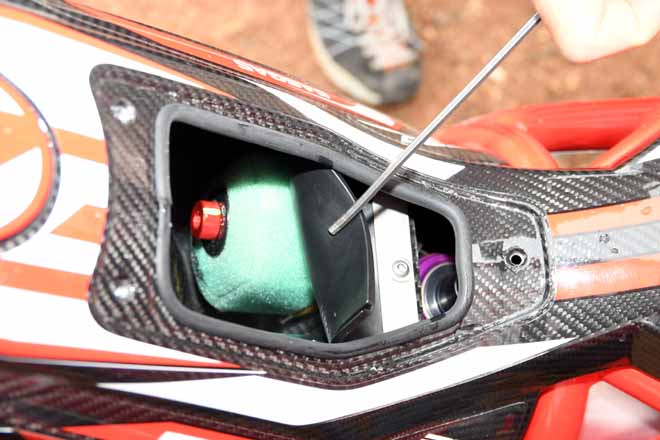
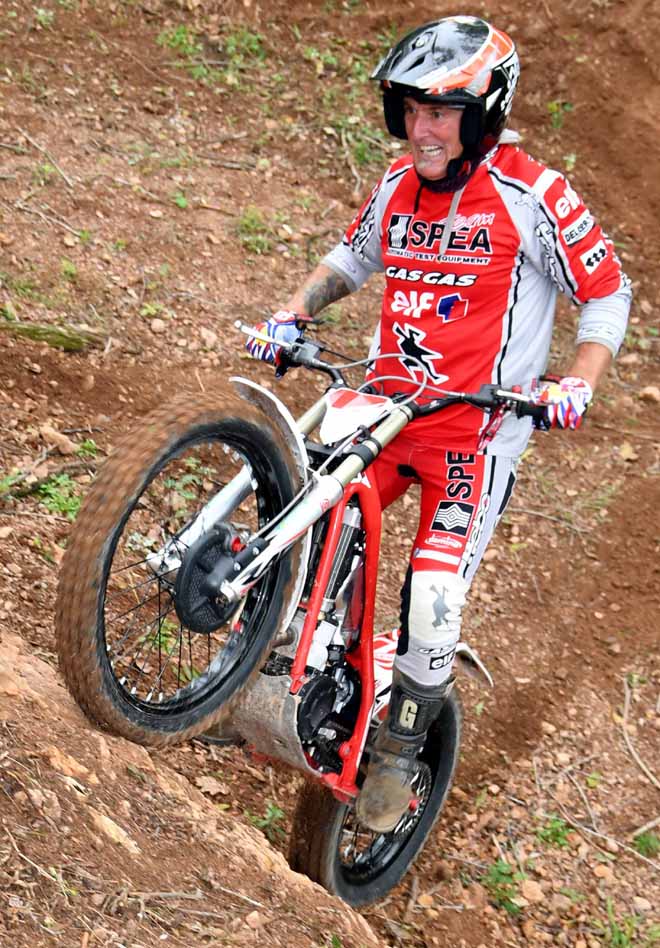
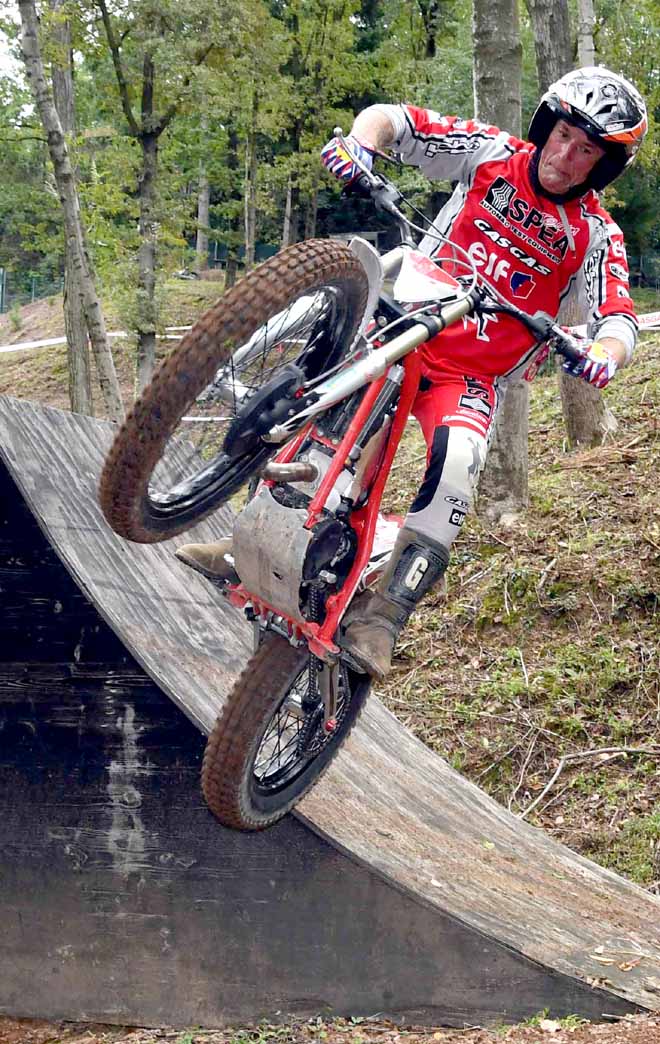
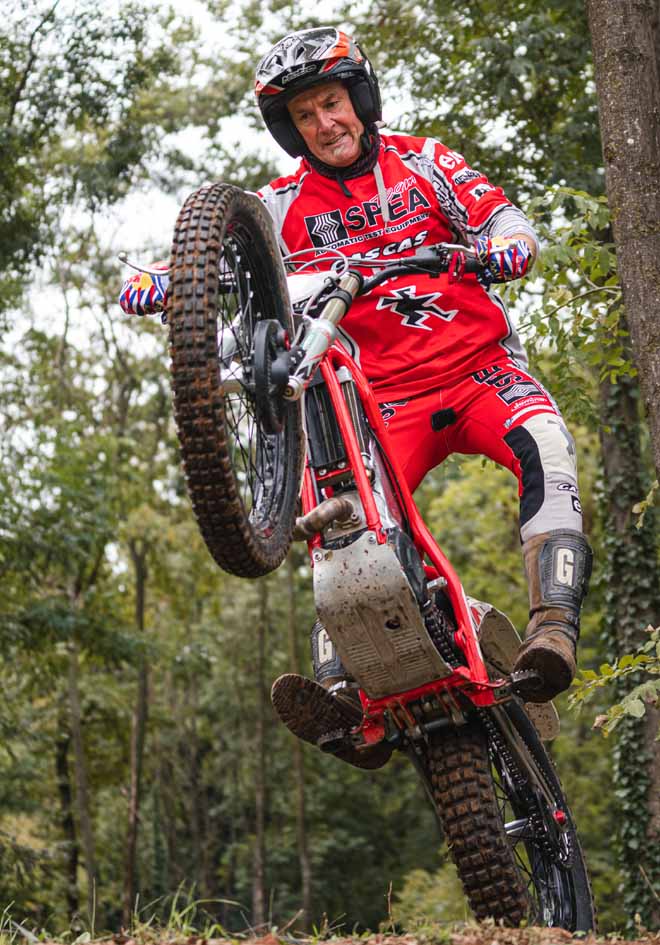
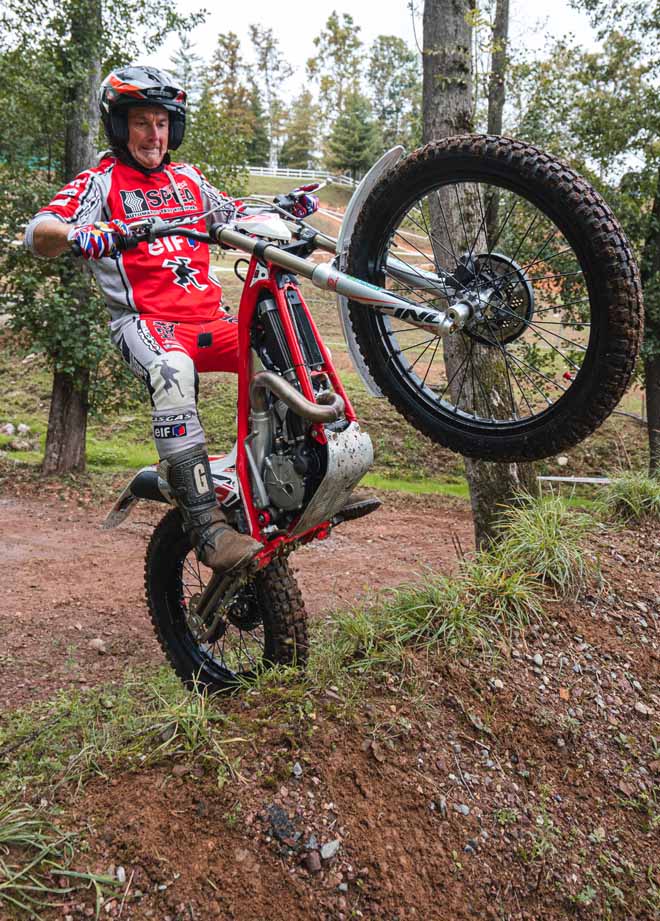
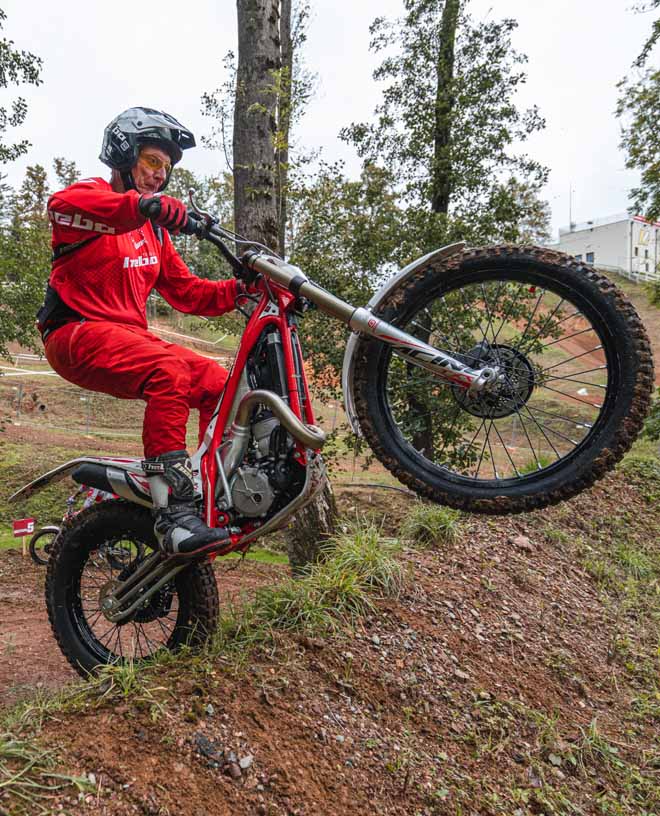
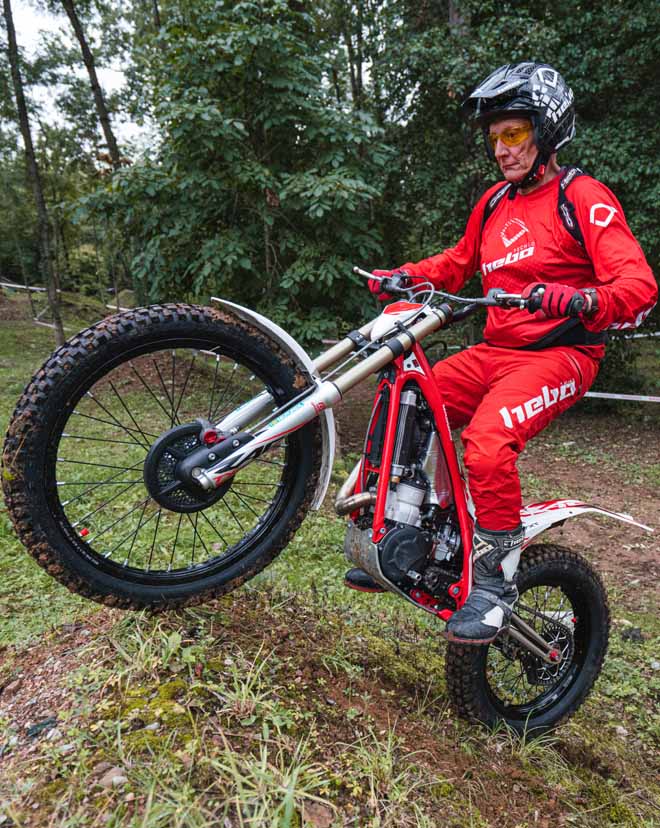
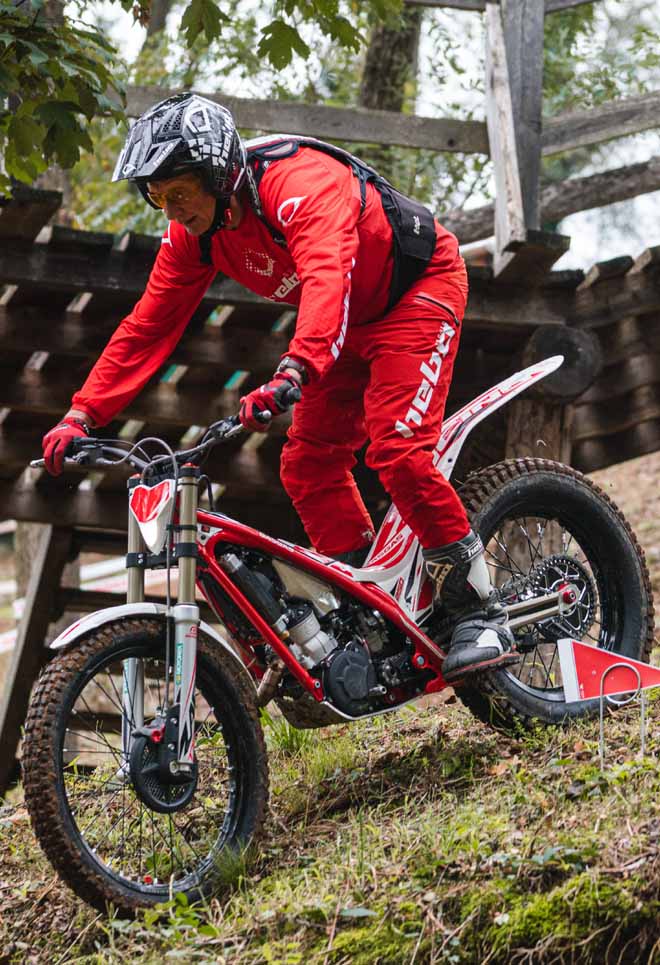
---------------------------------------------------------------------------------------


